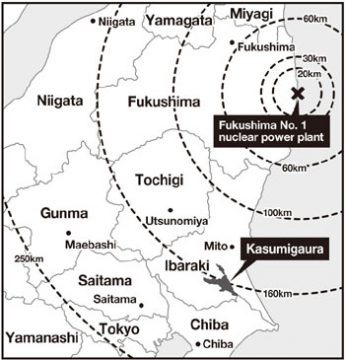by Leanne Ogasawara

Earthquake
1.
It was around midnight, Los Angeles time. And my mobile pinged with an incoming message.
“Sorry to text so late, but you should turn on the TV.”
It was from an old friend. He didn’t text me often, so I knew something was wrong.
I grabbed my laptop. There was an email from my husband back in Japan.
“Daijoubu.” It said. I’m OK.
I then logged on to Facebook, where I saw my first images of the earthquake.
By then, almost an hour had passed and communications throughout eastern Japan were overloaded. Working in Tokyo, my husband had no way of knowing when he sent me that first text that the earthquake had occurred over two hundred miles north, off the coast of Sendai.
I wouldn’t hear from him again until the next day.

2.
People will tell you, living in Japan means living with earthquakes. And it’s true. The country accounts for about twenty percent of the world’s earthquakes of magnitude six or greater. Being from Los Angeles, I am no stranger to earthquakes. But in Japan, tremors are a weekly occurrence. Over the years, I had grown used to their frequency and had learned to hear them coming in the rattling of windows, which I always sensed before the shaking started.
Shhh!… jishin desu! (Shhh!, I hear an earthquake!)
Friends talked about earthquakes like they talked about the weather. It was a way of making small talk. So was telling each other about recent purchases of disaster supplies. We all kept stockpiles. Like most Japanese people I know, despite always being prepared for the worst, my husband was always blasé about earthquakes when they happened.
But this time was different. Read more »
